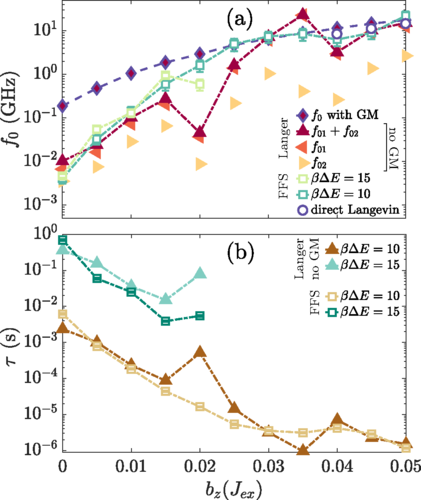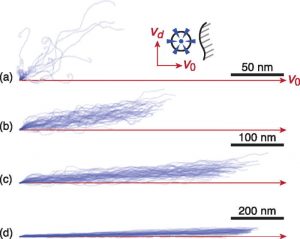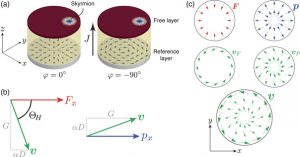
Our recent study on the lifetime of magnetic skyrmions, led by Louise Desplat, has just appeared as a Rapid Communication in Physical Review B. We studied the issue of thermal stability theoretically using two distinct methods. The first involves a generalisation of Kramer’s framework to multidimensional phase spaces due to Langer, while the second is a path sampling method, called forward flux sampling, which is useful for simulating rare events.
Despite the different assumptions that underpin these two approaches, we find overall quantitative agreement between the two, as shown in the figure above in which we plot the Arrhenius prefactor, f0, and the average lifetime, tau, as a function of applied magnetic field. This result provides confirmation of the validity of Langer’s approach (and consequently, similar techniques like harmonic transition state theory), and represents the first application of path sampling methods for studying skyrmion lifetimes.

